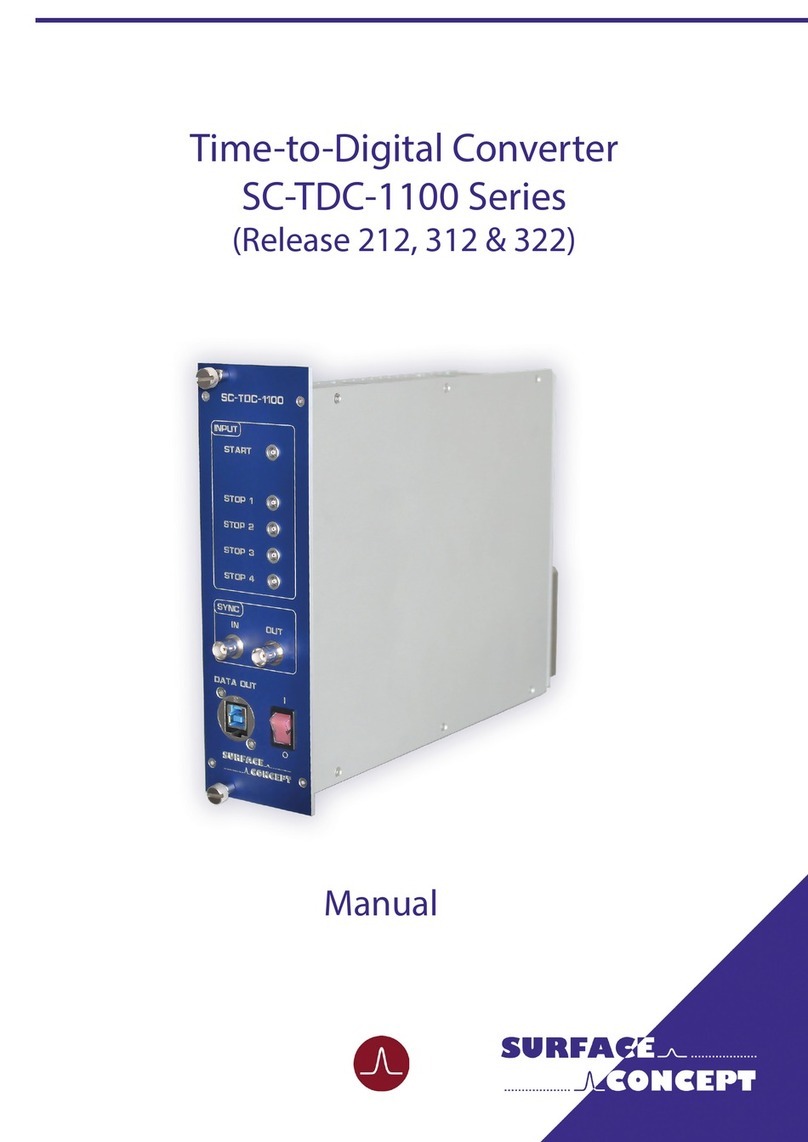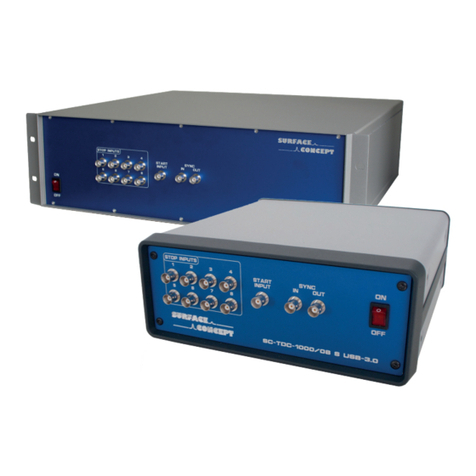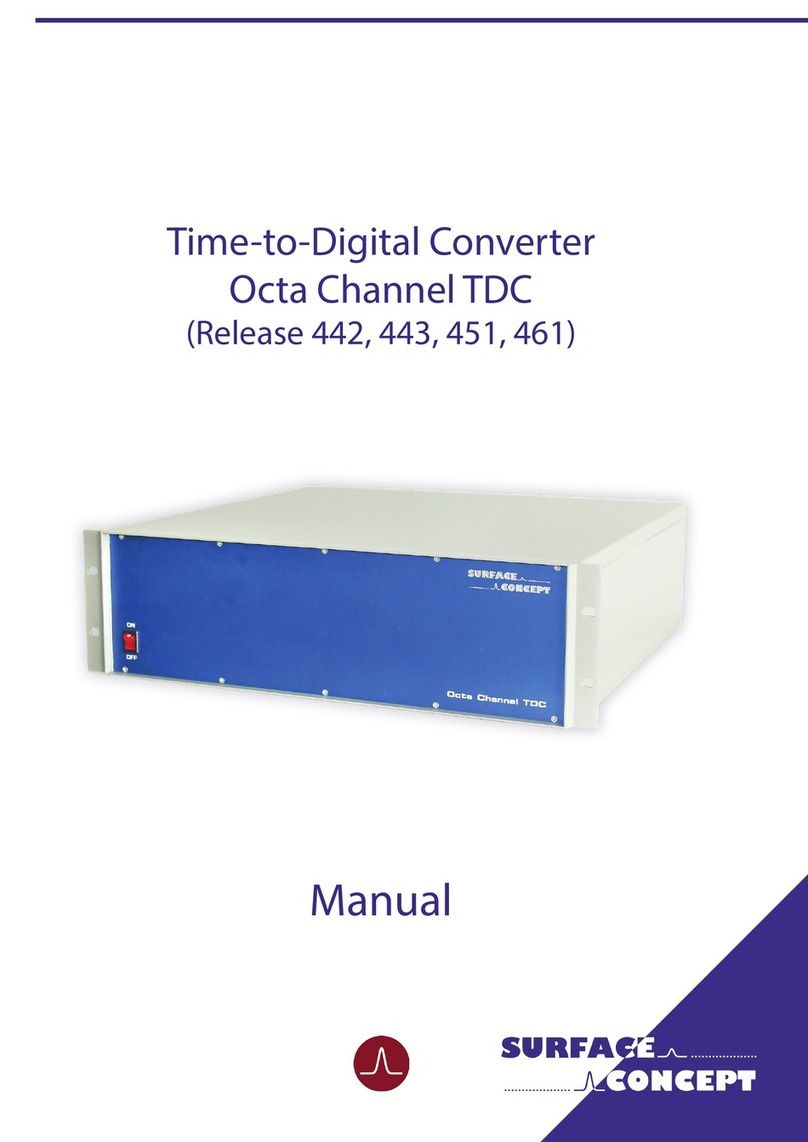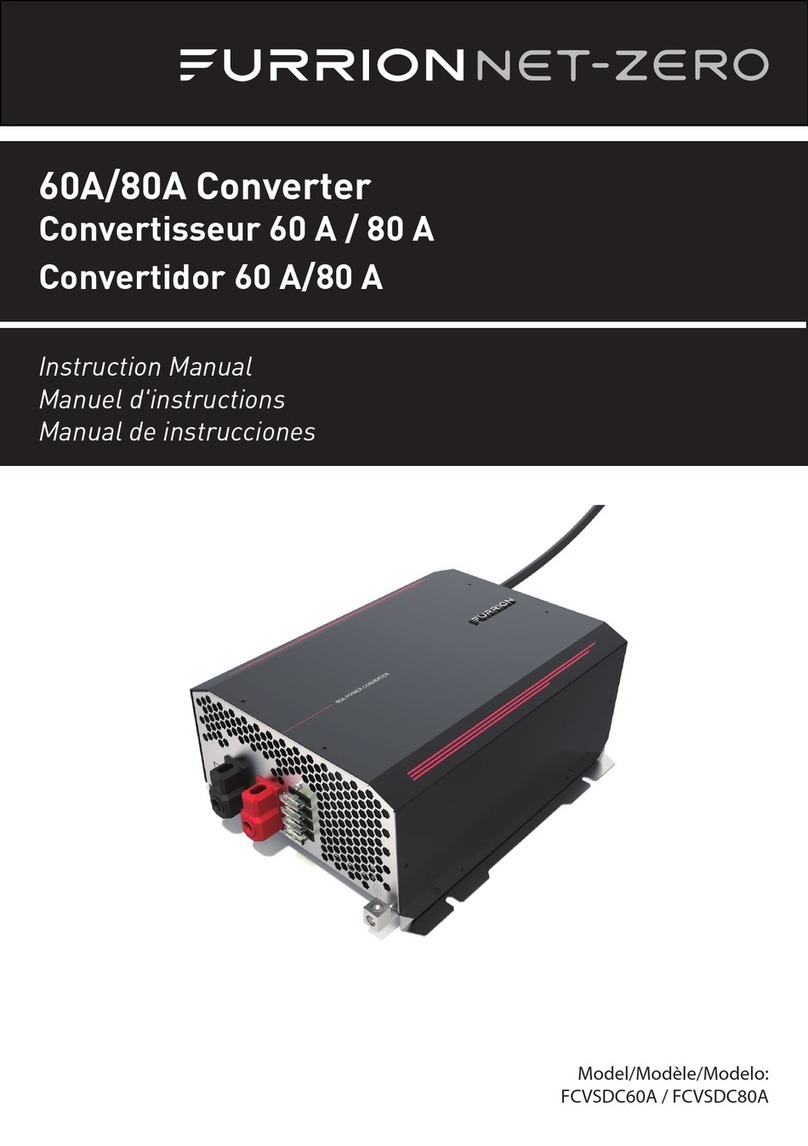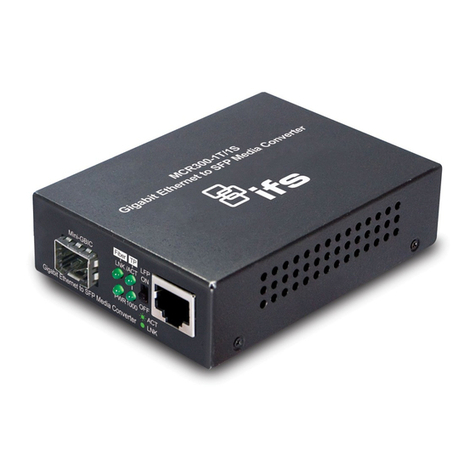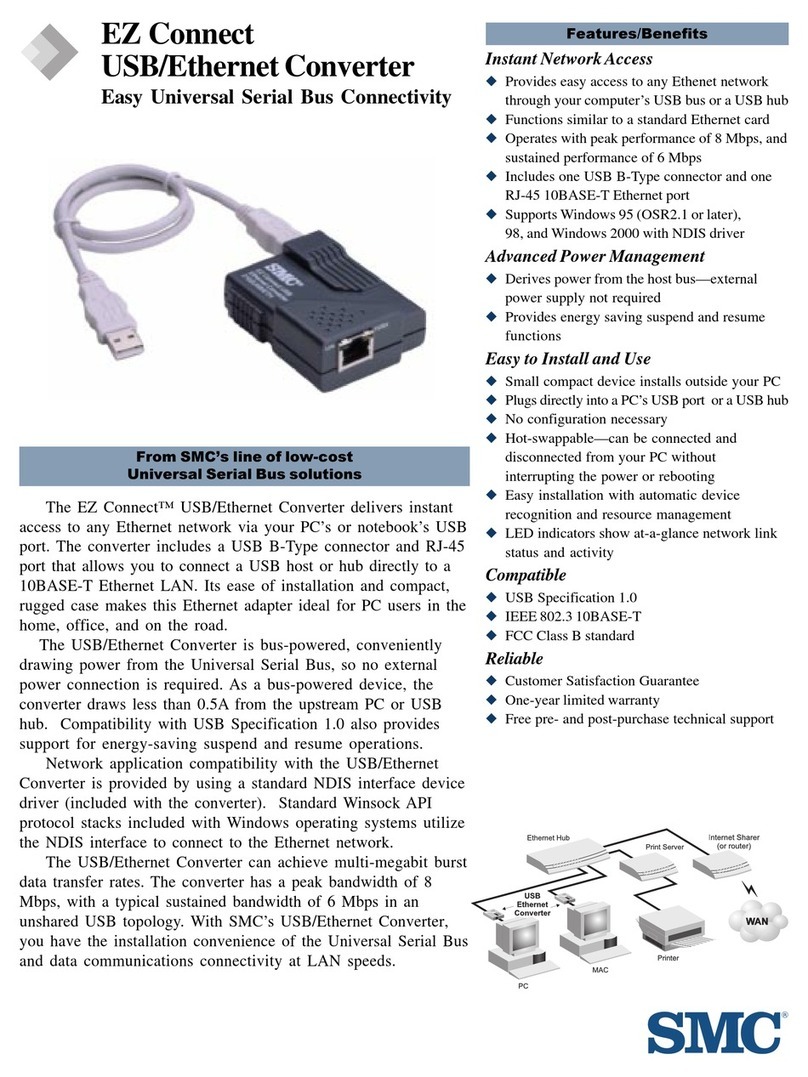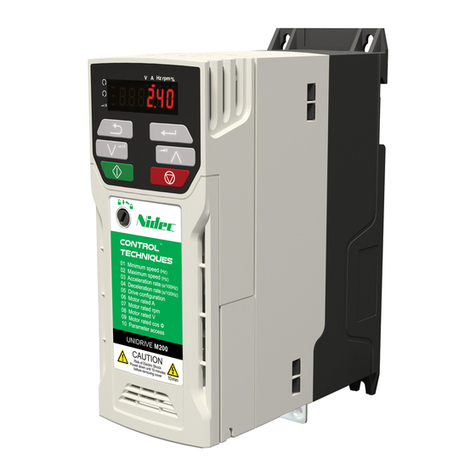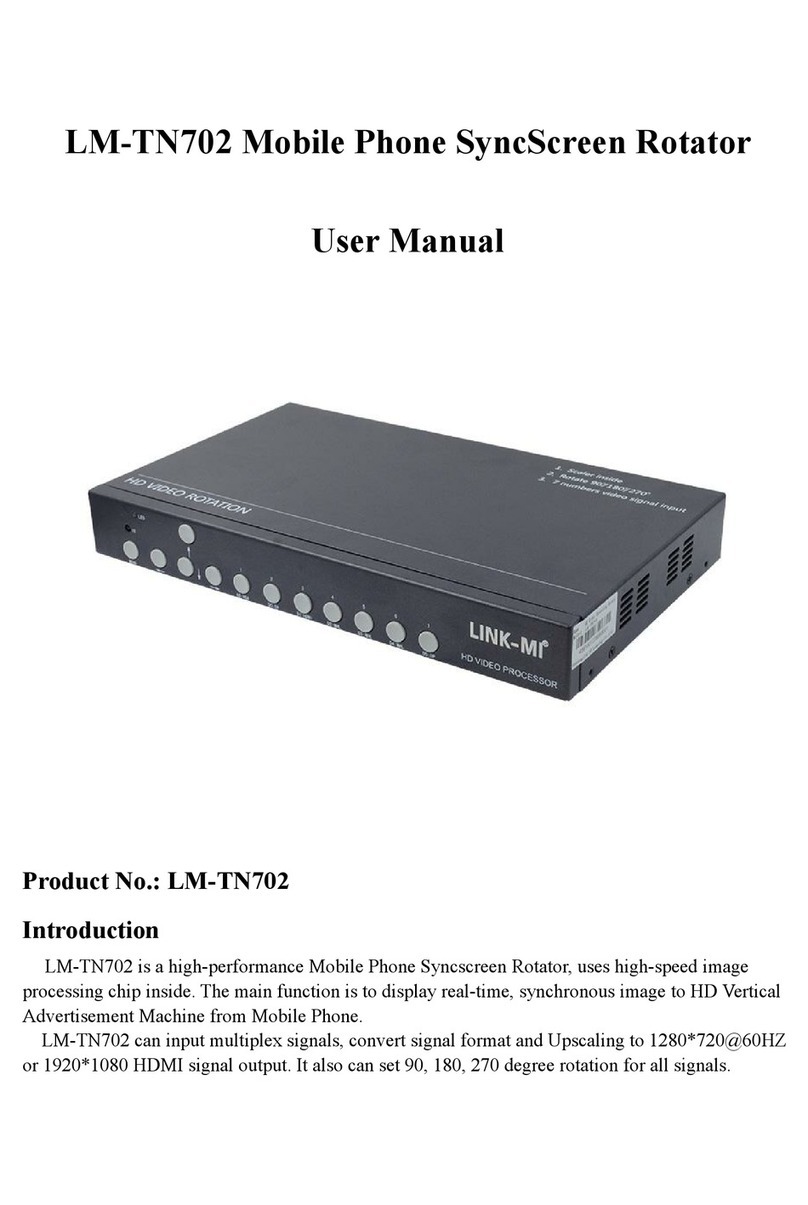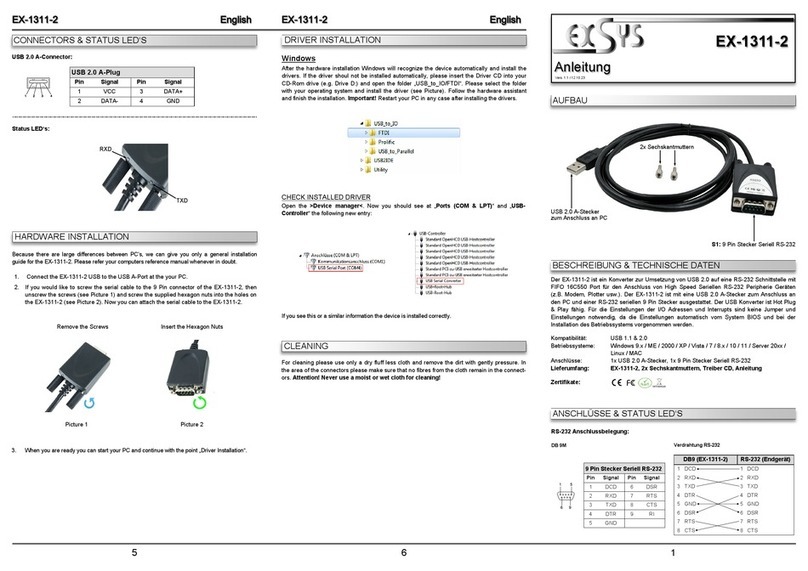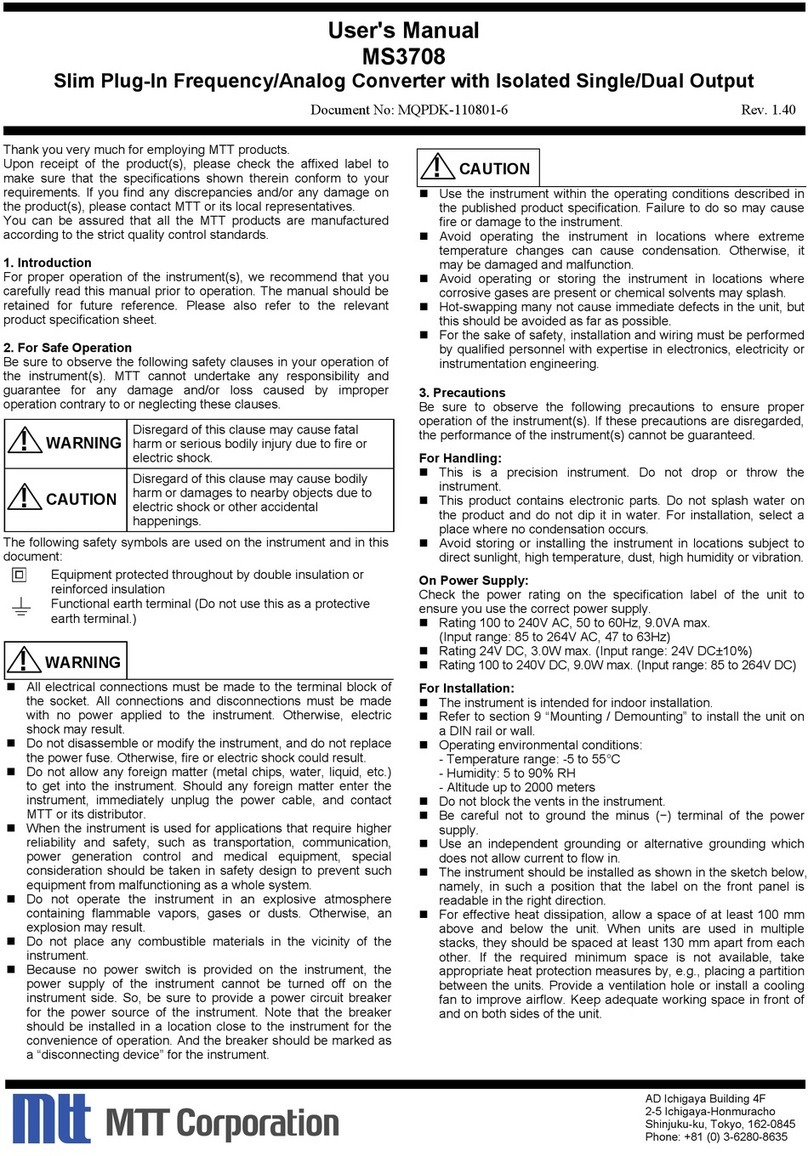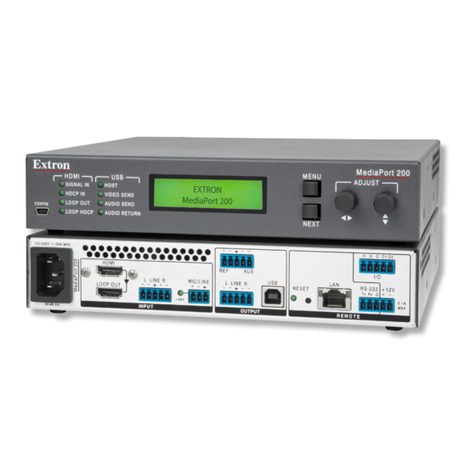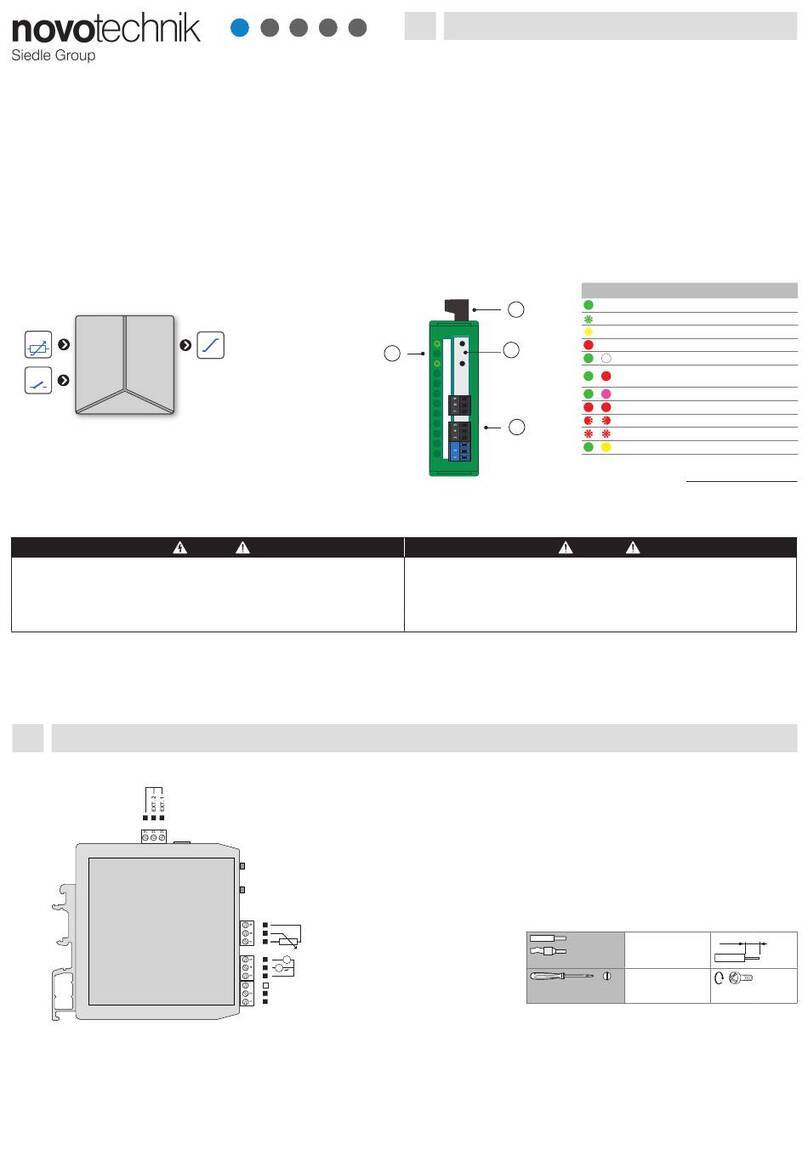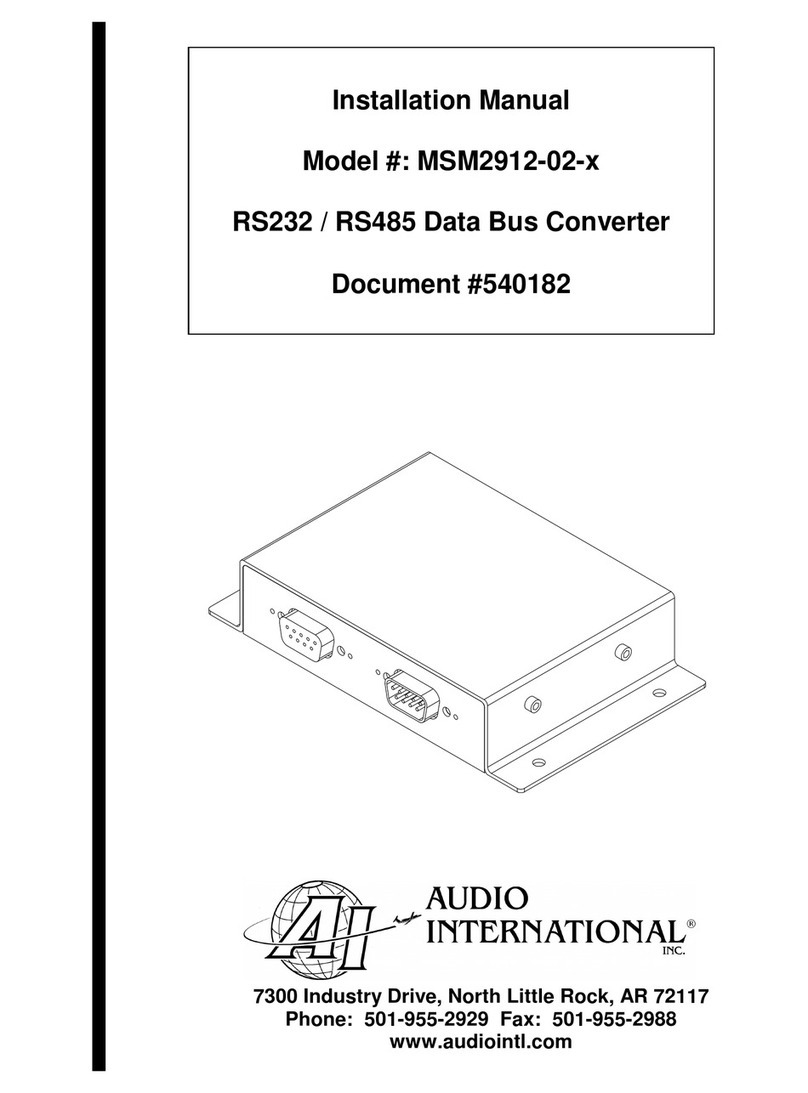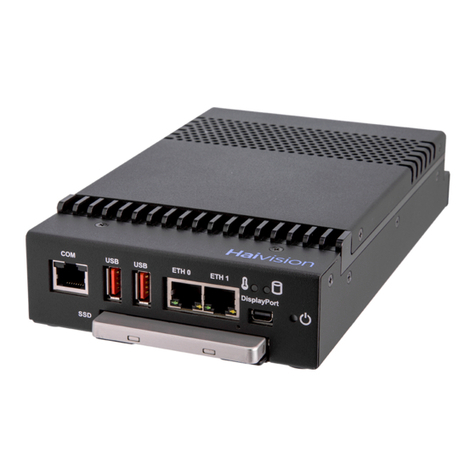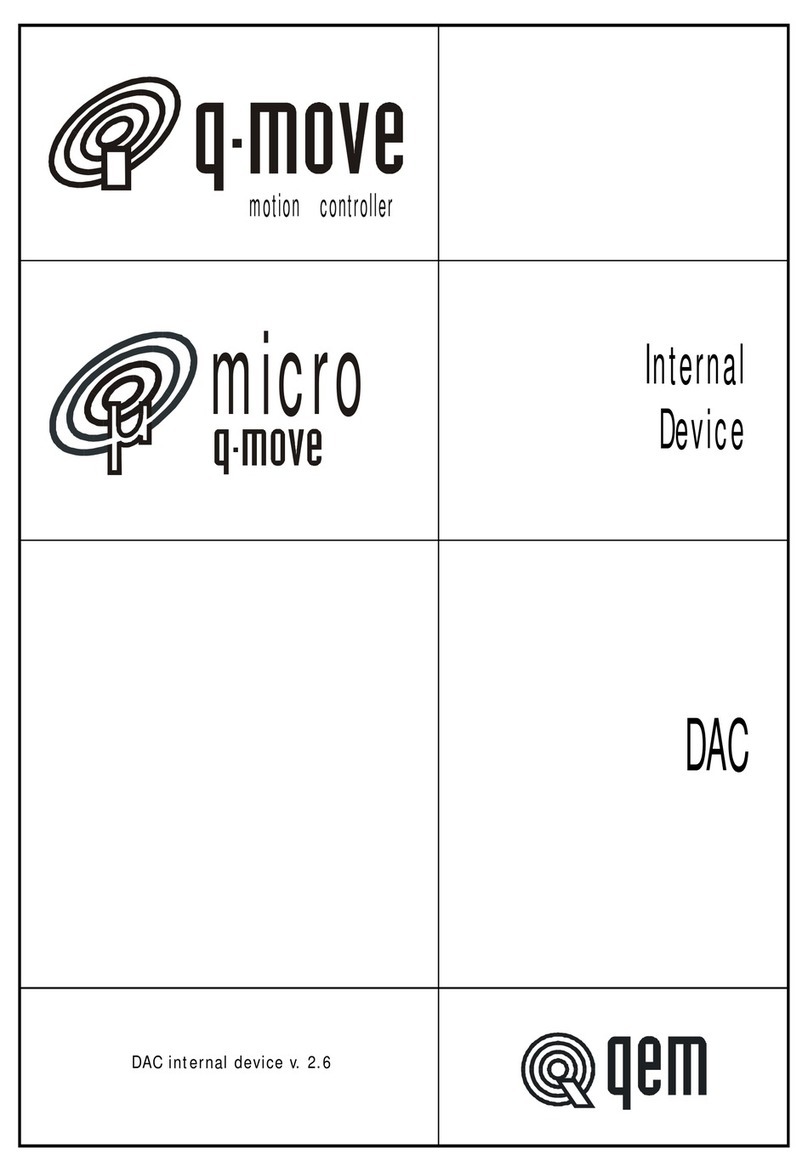Surface Concept SC-TDC-1000 D Series User manual

Time-to-Digital Converter
SC-TDC-1000 D Series
(Release 112 & 122)
Manual

2SC-TDC-1000 D Series Manual | Surface Concept GmbH
Surface Concept GmbH
Am Sägewerk 23a
55124 Mainz
Germany
phone: +49 6131 62716 0
fax: +49 6131 62716 29
email: info@surface-concept.de
web: www.surface-concept.de
All rights reserved. No part of this manual may
be reproduced without the prior permission
of Surface Concept GmbH.
User Manual for the
SC-TDC-1000 D Series
Releases: 112 & 122
Manual Version 2.6
Printed on 2021-04-30

3
SC-TDC-1000 D Series Manual
SC-TDC-1000 D Series Manual | Surface Concept GmbH
1 Table of Contents
1 Table of Contents......................................................................................................................3
2 General Information ................................................................................................................5
2.1 General Information..........................................................................................................5
2.2 Safety Instructions .............................................................................................................5
2.3 General Overview.............................................................................................................. 6
3 Installation...................................................................................................................................7
3.1 Initial Inspection.................................................................................................................7
3.2 Cabling...................................................................................................................................7
3.3 Software Installation, Requirements and Interface ...............................................9
4 TDC Layout............................................................................................................................... 11
4.1 Schematic Description .................................................................................................. 11
4.2 Layout of the SC-TDC-1000 D Series......................................................................... 12
4.2.1 TDC Stop Inputs .................................................................................................... 13
4.2.2 TDC Start Input...................................................................................................... 13
4.2.3 TDC Start Output .................................................................................................. 14
4.2.4 Device Synchronization Signal IN/OUT ........................................................ 15
4.2.5 Start Frequency Divider ..................................................................................... 15
4.2.6 Extended Measurement Range (sub-R 85 and E8 only)......................... 16
4.2.7 Tag Signal Input (sub-R D8 and E8 only)...................................................... 18
4.2.8 Master Reset Input (sub-R D8 and E8 only)................................................. 19
4.2.9 State Signal Input (sub-R D8 and E8 only)................................................... 19
4.2.10 ADC Input (sub-R D8 and E8 only)............................................................... 20
5 Technical Data......................................................................................................................... 21
6 List of Figures .......................................................................................................................... 27

4SC-TDC-1000 D Series Manual | Surface Concept GmbH
This side has been left blank on purpose.

5
SC-TDC-1000 D Series Manual
SC-TDC-1000 D Series Manual | Surface Concept GmbH
2 General Information
2.1 General Information
This manual is intended to assist users in the operation of the Releases 112 and 122 in sub-releases 85,
D8 and E8 of the SC-TDC-1000 D series. It is divided into 6 chapters. The chapter “General Information”
contains a brief overview of the devices as well as the safety instructions. The chapter“Installation”refers to
installation and cabling. The other chapters contain amongst others technical details and the description
of the device layout.
2.2 Safety Instructions
The“caution symbol”marks warnings, which are given to prevent an accidental damaging
of the detector or the readout system. Do NOT ignore these warnings and follow them
strictly. Otherwise no guarantee is given for arose damages.
Note
The “note symbol” marks text passages, which contain important information/hints
about the operation of the detector. Follow these information to ensure a proper
functioning of the detector.
The “high voltage symbol” marks warnings, given in conjunction with the description of
the operation/use of high voltage supplies and/or high voltage conducting parts.
Hazardous voltages are present, which can cause serious or fatal injuries. Therefore
only persons with the appropriate training are allowed to carry out the installation,
adjustment and repair work.
Please read this manual carefully before performing any electrical or electronic operations and strictly
follow the safety rules given within this manual. Surface Concept declines all responsibility for damag-
es or injuries caused by an improper use of the module due to negligence on behalf of the User.
The following symbols may appear throughout the manual:
Please also respect the Surface Concept Device Safety Instructions Manual in addition
and all given safety rules within it.
Note

6SC-TDC-1000 D Series Manual | Surface Concept GmbH
2.3 General Overview
The Surface Concept SC-TDC-1000 D device in Release 112 is a 2 stop input channel (02D) and in Release
122 a 4 stop input channel (04D) Time-to-Digital Converter with an integrated FPGA board and a USB3.0
interface in a stand alone table top housing.The devices with sub-release 85 come with a basic functionality,
while the devices in sub-release D8 & E8 come with additional inputs (like TAG IN, ADC IN) for an extended
measurement functionality.
The SC-TDC-1000 D Series is laid out for NIM signals on LEMO 00 type connectors for all stop and the start
inputs, while all additional inputs (like TAG IN, ADC IN) are laid out for LVTTL signals on BNC connectors. All
LVTTL signal inputs are TTL tolerant.
Do not open the device, while it is in operation. Hazardous voltages are present. In case
that the device must be opened, turn o the device rst AND pull out the power plug.

7
SC-TDC-1000 D Series Manual
SC-TDC-1000 D Series Manual | Surface Concept GmbH
3 Installation
3.1 Initial Inspection
Visual inspection of the system is required to ensure that no damage has occurred during shipping.
Should there be any signs of damage, please contact our provider immediately. Please check the delivery
according to the packing list (see Table 1) for completeness.
• SC-TDC-1000 D (R112, R122)
• 1x USB cable
• 1x power cable
Table 1: Packing list for the SC-TDC-1000 D (R112, R122)
3.2 Cabling
The general connection scheme of the SC-TDC-1000 D devices is given in Figure 1.
Figure 1: General connection scheme of the SC-TDC-1000 D devices.

8SC-TDC-1000 D Series Manual | Surface Concept GmbH
For all release versions
• Use the LEMO 00 sockets named “Stop“ to apply 1 - 2 (R112) and 1 - 4 (R122) NIM signals to the TDC
stop input channels.
• To perform time measurements with respect to an external clock, provide start pulses to the start input
of the TDC. Use the LEMO 00 socket named “Start” to apply NIM signals (see Chapter 4.2.2 for detailed
information).
• Use the USB cable to connect the TDC to the PC. Do not use PC front panel USB connectors; they are
often restricted in performance (see Chapter 3.3 for further details).
• Connect the power cable to the main connector.
• Install the TDC device driver or software package prior to switching on the TDC.
For sub-release versions D8 & E8
• Use BNC cables to connect your additional signals to the additional inputs of the TDC (e.g. TAG IN).
• Please note that all additional inputs are internally 50Ohm terminated and are laid out for 50Ohm
terminated LVTTL (low voltage TTL) signal levels.
Finish the complete cabling before the TDC is turned on and the GUI software is started.
Also, close the software and turn o the TDC before performing any changes to the
cabling.
This applies especially to the connection and disconnection of the start input of the TDC.
The start input of the TDC cannot handle pulses which are arriving in a time interval of
smaller than 120ns, as they are produced by e.g. connecting to and disconnecting from
the start input respectively.
If two subsequent pulses are applied to the start input of the TDC, the device will still
deliver results, but these results will contain wrong timing information.

9
SC-TDC-1000 D Series Manual
SC-TDC-1000 D Series Manual | Surface Concept GmbH
3.3 Software Installation, Requirements and Interface
All operation functions of the SC-TDC-1000 D devices are encapsulated in a dynamic linked library (scTDC1.
dll). Data processing and presentation on the PC is realized by an end-user demo software. See the
corresponding software manual for detailed information on the software package and the DLL interface.
The delivery package of the SC-TDC-1000 D devices includes a storage medium with hardware drivers
and a TDC Demo software. Connect the storage medium to your PC and install the software package as
described in the Software Installation Manual.
Read-out of the TDC is done with a standard PC via USB3.0. For the PC the following minimum system
requirements are highly recommended:
• Processor: Quad Core
• RAM: 4GB
• Windows 7 or higher
• USB (no front panel connector)
Note
Depending on the specic PC system used for the TDC readout (mainly depending on
the specic USB3.0 chip used on the PC motherboard), the use of USB3.0 can lead to
instabilities in the data communication. For those cases we then recommend the use
of USB2.0. The use of USB2.0 is always possible, but there might be limitations in the
maximum count rates for certain detector types and/or detector operation modes.

10 SC-TDC-1000 D Series Manual | Surface Concept GmbH
This side has been left blank on purpose.

11
SC-TDC-1000 D Series Manual
SC-TDC-1000 D Series Manual | Surface Concept GmbH
4 TDC Layout
4.1 Schematic Description
The design of the SC-TDC-1000 D series combines the excellent performance of the GPX TDC chip with a
high speed USB interface.
A eld programmable gate array (FPGA) enables comfortable setups and a variable data stream handling
from the TDC via USB.
The main delayline detector readout functionality is permanently programmed. A complex FIFO design
makes data losses almost impossible. The user DLL controls the data handling and streaming for the user.
The following brief description of the internal structure of the measurement unit is only informative:
Figure 2: Schematic sketch of TDC functioning.
Arrival times of pulses at the stop inputs are measured by the TDC with respect to either an internal
reference start signal, provided by the FPGA, or an external start signal. An internal electronics provide the
TDC start signal to an additional BNC socket for further extended measurement use. The measurement
dwell times for data from the TDC are settled within the FPGA by a quartz stabilized time gate in an interval
from 1ms to 1193h.
The synchronization pulse for the external acquisition start (Sync. In) is transferred directly into the FPGA
that controls the acquisition process. The FPGA also sends out a synchronization pulse for marking the end
of an acquisition (via the Sync. Out socket).

12 SC-TDC-1000 D Series Manual | Surface Concept GmbH
1. LEMO 00 Socket for Start Input
2. LEMO 00 Sockets for Stop Inputs
3. BNC Socket for external Start Output
4. BNC Sockets for Device Synchronization
Signal IN and OUT
5. BNC sockets for ADC - Input and ADC +
Input (sub-R D8 & E8)
6. BNC socket for State Input (sub-R D8 &
E8)
7. BNC socket for Tag Input (sub-R D8 & E8)
8. BNC socket for Master Reset Input (sub-R
D8 & E8)
9. Power Switch to turn the TDC ON/OFF.
Lighted, when set to ON
10. Power Socket
11. USB Connection Socket
Figure 3: Layout of the SC-TDC-1000 02D R2D8 and R2E8 (similar for R258 but with
reduced numbers of inputs and outputs, see below).
1 2
3
4
5
6
7
8
9
10
11
4.2 Layout of the SC-TDC-1000 D Series
Additional inputs (e.g. TAG or ADC) are available (sub-R D8 & E8) to feed in additional signals directly into
the TDC data stream for extended measurement functionality.
TheTDC data streaming can be performed with a specic pre-conditioning of the DLD data, which includes
channel pairing, pair result arithmetic and many more. Communication to and from the PC is achieved via
a USB interface. Data streaming via the USB interface is provided without losses using a large memory
buer within the device.

13
SC-TDC-1000 D Series Manual
SC-TDC-1000 D Series Manual | Surface Concept GmbH
4.2.1 TDC Stop Inputs
The SC-TDC-1000 D devices come with 2 (R112) or 4 (R122) stop input channels. All stop signals must be
applied as NIM signals to the“stop” inputs (LEMO 00 socket).
4.2.2 TDC Start Input
An external start signal must be provided to the TDC for real time resolved measurements. The external
start signal must be applied as a NIM signal to the“start” input (LEMO 00 socket). In addition the software
must be set to accept external start signals, by changing the corresponding entry in the tdc_gpx3.ini le.
The corresponding entry in the tdc_gpx3.ini le is:
Ext_Gpx_Start = X
X is either NO or YES. The default setting is YES.
“Ext_Gpx_Start” = YES must be set for the TDC to accept the external start signal.
In addition the following entries in the tdc_gpx3.ini must be set as follows:
StartCounter = YES
StartPeriod = 0x800000
Measurements are performed in respect to an internal start signal of the TDC when “Ext_Gpx_Start” =
NO. This internal start signal has no time correlation to any external clock and therefore also not to the
incoming stops. Any external start signal must be disconnected from the start input of the TDC, when
working with the internal start signal.
The rise time of the start signal is of great importance, the faster the rise time, the better the time resolution.
The maximum frequency of the start pulse must not exceed 9MHz.
Note
Do not forget to save the ini le after any changes you make and restart the software. For
further information check the software manual.
Take care that measurements are performed either with the internal start signal (Ext_
Gpx_Start = NO) and no signal applied to the Start Input or with an external start signal
(Ext_Gpx_Start = YES) applied to the Start Input. In all other cases the TDC is not working
correctly.
Note

14 SC-TDC-1000 D Series Manual | Surface Concept GmbH
The start input of the TDC cannot handle pulses which are arriving in a time interval of
smaller than 120ns (e.g. as produced by connecting/disconnecting the start signal during
TDC operation). If two such subsequent pulses are applied to the start input of the TDC, the
device will still deliver results, but these results might contain wrong timing information.
The TDC does also not work with start signals of frequencies larger than 9MHz. For this
reason, the TDCs are equipped with an internal frequency divider. Larger start pulse
frequencies must be divided down by an appropriate dividing factor (e.g. dividing factor
of 16 for 80MHz start pulse frequency). For start frequencies smaller then 25kHz the user
must make sure that all stop signals are provided within a time window of 40µs after
each start. Otherwise the TDC will deliver wrong time results, which are not easy to be
identied as such.
For applications with time distances larger 40µs use the start counter or the extended
measurement range (see Chapter 4.2.6).
4.2.3 TDC Start Output
TheTDC holds an internal electronics, which provide theTDC start signal for further extended measurement
use. The TTL Start output (BNC socket) provides either the external start if applied or the internal start,
generated by the FPGA.
Note
The temporal resolution is mainly inuenced by the quality of the start signal because the
TDC measures the time of a rising or a falling edge using a constant voltage threshold.
Lower precision than expected may be observed for slow rise or fall times of the signals
or in case of any ripple/jitter on the switching edge of the signals. In particular, the time
resolution may distinctively depend on any voltage variation of the ground level of the
measured start signal.
Therefore, if the signals are varying in amplitude, one needs to process them by external
electronics components (e.g. constant fraction discriminators, CFDs).

15
SC-TDC-1000 D Series Manual
SC-TDC-1000 D Series Manual | Surface Concept GmbH
4.2.4 Device Synchronization Signal IN/OUT
The data acquisition can be synchronized to an external signal for various measurement application linked
to external devices. This device synchronization signal has to be applied as LVTTL signal to the “SYNC IN”
BNC socket of the TDC. This functionality is switched on/o within the tdc_gpx3.ini le.
The corresponding entry in the tdc_gpx3.ini le is:
Ext_trigger = X
X is either NO or YES. The default setting is NO.
The TDC ignores any external synchronization signals if“Ext_trigger” = NO. In case that“Ext_trigger” = YES
and the “SYNC IN”signal is not provided, the device will not come to operation at all.
The TDC provides always a LVTTL signal on the “SYNC OUT” BNC socket after the end of each acquisition,
independent on the setting of“Ext_trigger”.
Note
Do not forget to save the ini le after any changes you make and restart the software. For
further information check the software manual.
4.2.5 Start Frequency Divider
The maximum start frequency for the SC-TDC-1000 D devices is restricted to 9MHz. To cope with larger
start frequencies the SC-TDC-1000 D devices are equipped with an internal start frequency divider for
external start frequencies of up to 150MHz (this mode only works when using the external start input).
Herewith the frequency divider can operate with dierent dividing factors, which can be set within the
software, to always guarantee a start frequency of below 9MHz.
The frequency divider is switched on/o within the tdc_gpx3.ini le, in which also the dividing factors are
set.
The corresponding entry in the tdc_gpx3.ini le is:
Start_Divider = X
X is an integer value and must be one of the following values: 0, 2, 4, 8, 16 or 32. The value 1 is not allowed.
The default setting is 0
X = 0 switches o the start divider and leads to normal operation without dividing the start frequency.
The time histogram will appear X times in series, when using a dividing factor of X. This is due to the fact
that only each 1st start pulse out of a sequence of X start pulses will be accepted as start signal, while all
stop signals are detected. This leads to the multiple time histograms that appear sequentially in time. The
multiple histograms can be resorted to one single time histogram by a MODULO-operation during data
analysis.

16
4.2.6 Extended Measurement Range (sub-R 85 and E8 only)
The measurement range in the normal start-stop operation mode is 40µs. The SC-TDC-1000 D devices
can be equipped with an extended measurement range functionality, to cope with larger measurement
ranges .The reference measurement is switched on/o within the tdc_gpx3.ini le.
The corresponding entry in the tdc_gpx3.ini le is:
ReferenceMeasurement = X
X is either NO or YES. The default setting is NO.
X = NO switches the reference measurement o.
The extension of the measurement range is working in such a way, that start signals are internally counted
up to extend the global time axis. For this the TDC is operating with its internal start signal, while the
external start signal is given to one of the stop signals in addition to the regular stop signals. Time results
are then provided as reference results of the external start and the stop signals on basis of the internal
extended time axis.
Therefore one of the stop inputs of the TDC must be used to apply the external start signal, which reduces
the number of available stop inputs by one.
Additional changes in the tdc_gpx3.ini le must be made for the extended measurement range to function.
The corresponding entries in the tdc_gpx3.ini le to be made are:
Ext_Gpx_Start = NO
StartCounter = NO
StartPeriod = 0
It must also be dened in the tdc_gpx3.ini le which of the stop input channels provide the reference
signal for calculating the times of the other stop signals. The need of dening the reference channel also
allows to dene dierent reference channels for the dierent stop channels.
The corresponding entry in the tdc_gpx3.ini le is:
ReferenceChannelX = Y
X corresponds to the specic number of the stop channel. Ydenes the specic stop channel which is
used for stop channel X as reference channel. The channel numbering starts with 0. Single channels can
also be switched o in case that signals on that channel should not be measured itself, but only be used as
reference channel. In this case X can be set to -1.
The reading of this entry is: “the reference of channel X is channel Y”.
SC-TDC-1000 D Series Manual | Surface Concept GmbH

17
SC-TDC-1000 D Series Manual
Example 1
ReferenceChannel0 = -1
ReferenceChannel1 = 0
ReferenceChannel2 = 0
…..
ReferenceChannel# = 0
# represents the maximum available channel number.
With this denition all applied stop signals are measured in reference to the signal applied to channel 1 (0
in the software channel counting), while the signals of channel 1 themselves are not measured.
Example 2
ReferenceChannel0 = -1
ReferenceChannel1 = 0
ReferenceChannel2 = 2
ReferenceChannel3 = 2
With this denition the stop signal on channel 2 is measured in reference to the signal applied to channel
1 while the stop signal on channel 4 is measures in reference to the signal applied to channel 3. Also the
signals of channel 1 themselves are not measured, but the signals of channel 3 are measured in reference
to themselves. With such denition the results from channel 3 provide the time between two subsequent
signals on channel 3 (in case that this signal is a periodic signal, the time result represents exactly that
period).
It can happen that the use of more than one stop channel can lead to a wrong sorting of events within
the data stream in respect to their time while using the extended measurement range functionality. This
behaviour can be corrected by a sorting algorithm that resorts neighbouring signals within a certain
“depth”. This depth can be adjusted in the tdc_gpx3.ini le.
The corresponding entry in the tdc_gpx3.ini le is:
ChronoDepth = X
X is an integer value and must be set between 0 and 8.
The default setting is 0
X = 0 switches o the sorting algorithm.
The sorting algorithm works better at higher selected values, but higher values signicantly increase the
load on the PC CPU.
SC-TDC-1000 D Series Manual | Surface Concept GmbH

18
4.2.7 Tag Signal Input (sub-R D8 and E8 only)
The tag input is an additional counter input for signal counting. The counter number is included into the
general data stream of the TDC. The tag signal has to be applied as a LVTTL (low voltage TTL) signal on
50Ohms to the“TAG IN“ BNC socket of the TDC.
In addition changes in the tdc_gpx3.ini le must be made for the tag signal to be registered by the TDC.
The corresponding entry in the tdc_gpx3.ini le is:
TimeTag = X
X is an integer value and must be one of the following values: 0, 1, 2, 3, 4, 5 or 6.
The default setting is 0.
Each value represents a certain functionality, which is described below:
TimeTag = 0
TimeTag = 1
TimeTag = 2
TimeTag = 3
TimeTag = 4
TimeTag = 5
TimeTag = 6
;tag counting is switched o and any signal to the“TAG IN“ is ignored, nBytes can be set
to 4 or 8 (see below for further details on nBytes). Do also not provide any state/sign
input, master reset input or ADC input signal.
;the tag is counting the internal 80MHz clock signal of the FPGA and is therefore
functioning as a timer. Any signal to the“TAG IN“ is ignored. This mode is not working in
combination with the state/sign input.
;the tag is counting the external LVTTL signal applied to the “TAG IN“. The counter is
reset with the start of a new measurement. This mode is not working in combination
with the state/sign input.
;tag counting is switched o and any signal to the “TAG IN“ is ignored. This value must
be set for using the ADC functionality in combination with the state/sign input and the
master reset input.
;corresponds to the setting of TimeTag = 3.
;must be set for using the tag as timer (similar to TimeTag = 1) but in combination with
the state/sign input. A pulse on“TAG IN“ resets the timer to 0.
;must be set for using the tag as counter (similar toTimeTag = 2) but in combination with
the state/sign input.
The number of bits which are available for each detector event (x, y, t) is dened by an additional parameter
called “nBytes”in the tdc_gpx3.ini le.
The corresponding entry in the tdc_gpx3.ini le is:
nBytes = X
X is an integer value of either 4 or 8. The default setting is 8.
SC-TDC-1000 D Series Manual | Surface Concept GmbH

19
SC-TDC-1000 D Series Manual
Dierent settings of “nByte” parameter in combination with dierent settings of the “TimeTag” parameter
results in a further dierentiation of the TimeTag functionality as described below:
“nBytes“ = 4
“nBytes“ = 8
“TimeTag“ = 0
“nBytes“ = 8
“TimeTag“ > 0
;each detector event x, y, t has a length of 32bit. The sub-denition for the dierent
coordinates x, y and t is dened by the “DataFormat“ (e.g. “DataFormat“ = 2 ;x = 11bit,
y = 11bit, t = 10bit, see the software manual for further details).
;each detector event x, y, t has a length of 64bit. The sub-denition for the dierent
coordinates x, y and t is dened by the „DataFormat“ (e.g. “DataFormat“ = 2 ;x = 11bit,
y = 11bit, t = 42bit, see the software manual for further details).
;each detector event x, y, t has a length of 64bit. The rst 32bit are used for the tag
counter. The second 32bit are sub-denition for the dierent coordinates x, y and t is
dened by the„DataFormat“.
In case that“TimeTag“ > 0, “nBytes“ is set to 8 automatically within the software and any
ini le settings are ignored.
4.2.8 Master Reset Input (sub-R D8 and E8 only)
The master reset input is treated as an additional sign signal within the TDC and is counted up in a software
counter within the dll.
In addition the master reset input is connected to the reset pin of the TDC chip. Each time a signal is
applied to the master reset input the corresponding software counter is counting up and the input and
output FIFOs of the TDC chip are cleared (all old TDC data are erased).
A LVTTL (low voltage TTL) signal on 50Ohms has to be applied to the„MASTER RESET IN“ BNC socket of the
TDC.
4.2.9 State Signal Input (sub-R D8 and E8 only)
The state signal has to be applied as a LVTTL (low voltage TTL) signal on 50Ohms to the “STATE IN“ BNC
socket of the TDC.
In addition, the value of the variable named “TimeTag”in the tdc_gpx3.ini le (depending on the software
version which is used) must be adapted for the state signal to be registered by the TDC.
The state or sign signal input assumes values 0 or 1, depending on the given electronic level of the LVTTL
signal (low or high).
For the state/sign input to be functioning the following variables in the tdc_gpx3.ini must be used:
TimeTag = 3
TimeTag = 4
TimeTag = 5
;must be set for using the state input in combination with the ADC functionality and
the master reset input. The tag counting is switched o and any signal to the„TAG IN“ is
ignored.
;corresponds to the setting of TimeTag = 3
;must be set for using the state input. Hereby the state input functions in combination
with the tag signal functioning as a timer, counting the internal 80MHz clock signal of
the FPGA. Pulse on„TAG IN“ resets the timer to 0.
SC-TDC-1000 D Series Manual | Surface Concept GmbH

20
TimeTag = 6 ;must be set for using the state input. Hereby the state/sign input functions in
combination with the tag signal functioning as a counter, counting the external LVTTL
signal applied to the“TAG IN“.
4.2.10 ADC Input (sub-R D8 and E8 only)
The SC-TDC-1000 D devices in sub-release D8 and E8 come with an integrated 14bit Analogue-to-Digital
converter with a dierential signal input (“ADC IN +“ and“ADC IN -“) which is laid out for analogue voltages
between +10V and -10V.
To work with the ADC the value of the variable named “TimeTag” in the tdc_gpx3.ini le must be adapted
in the following way:
TimeTag = 3
TimeTag = 4
;must be set for using the ADC functionality. This will work also in combination with the
state/sign input and the master reset input. The tag counting is switched o and any
signal to the“TAG IN“ is ignored.
;corresponds to the setting of TimeTag = 3
In case that no dierential analogue signal would be available, one can also use a single non-dierential
signal. In this case one has to use the positive input (“ADC IN +“) of the ADC, while terminating the negative
input (“ADC IN -“) to ground. Please be aware that this way of operating is working, but it is more prone to
noise.
SC-TDC-1000 D Series Manual | Surface Concept GmbH
Other manuals for SC-TDC-1000 D Series
1
Table of contents
Other Surface Concept Media Converter manuals
